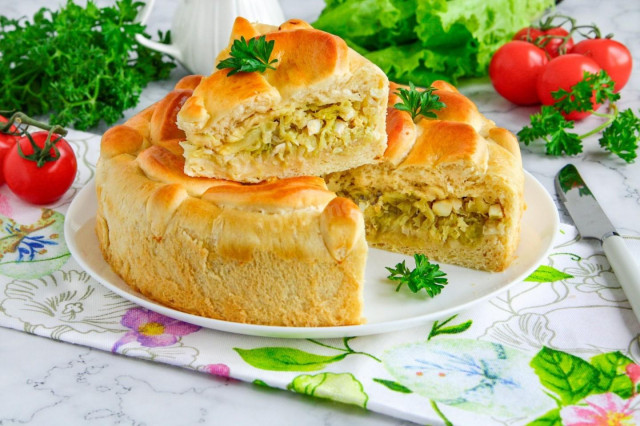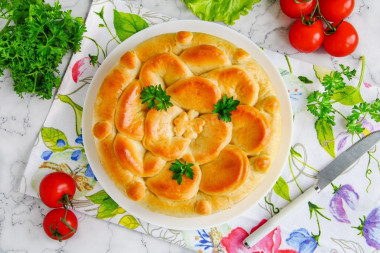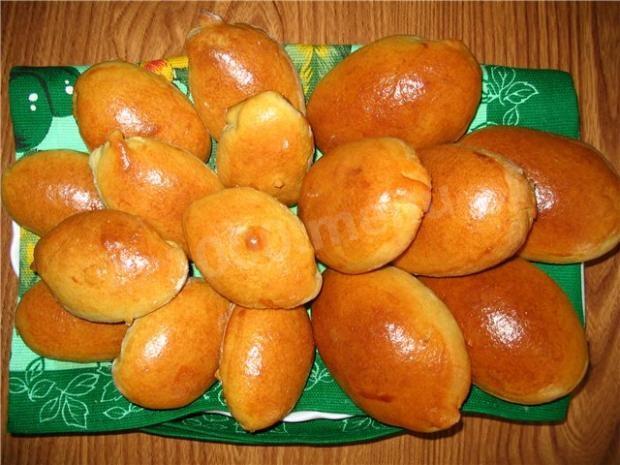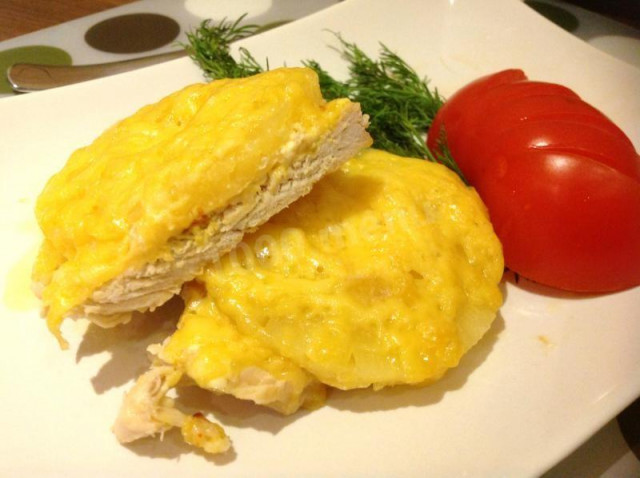Composition / ingredients
Step-by-step cooking
Step 1:
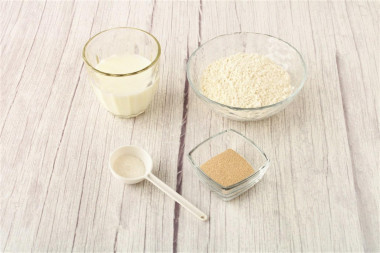
How to bake a yeast cake with fresh cabbage in the oven? First prepare the ingredients for the sourdough. Heat the milk slightly.
Step 2:
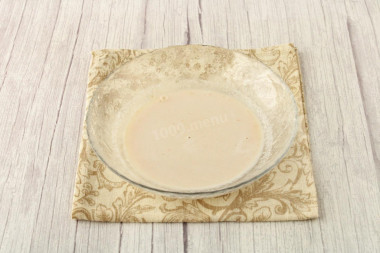
In a suitable sized bowl, dissolve yeast and sugar in milk.
Step 3:

Sift the flour into the yeast mixture.
Step 4:
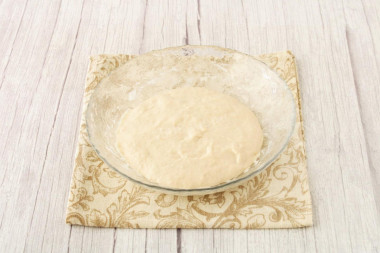
Mix the mass well with a whisk until the lumps of flour disappear. Cover the sponge with a towel and leave in a warm place to rise for about 20 minutes.
Step 5:
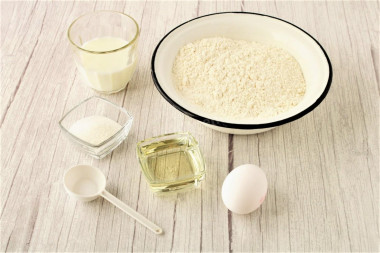
Measure the products for the test. Milk should also not be cold. Preheat it to a slightly warm state. Take odorless vegetable oil.
Step 6:
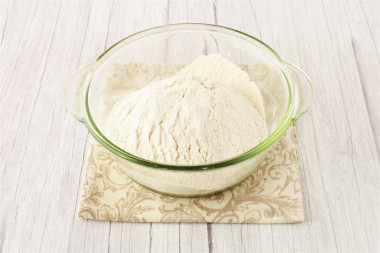
In a bowl with high sides, sift the flour. Flour enriched with oxygen contributes to an easier and faster rise of the dough. And the finished pastries will turn out more lush.
Step 7:

By this time, the sourdough has increased in volume by 2 times. A lot of bubbles appeared on its surface.
Step 8:

To knead the dough, take a spacious container with high sides. Whisk the eggs with salt and sugar until smooth.
Step 9:

Pour in the slightly warmed milk, stir.
Step 10:
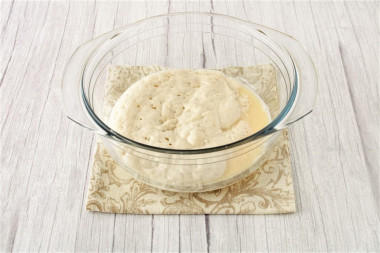
Lay out the approaching sourdough, mix.
Step 11:

Add vegetable oil, mix lightly.
Step 12:

Pour the sifted flour (about 3/4) into the resulting mass, mix the dough first with a spoon. Do not pour out all the flour at once, it may need less than indicated in the recipe.
Step 13:

Pour the rest of the flour in small portions while stirring the dough with your hands. Keep an eye on its consistency.
Step 14:
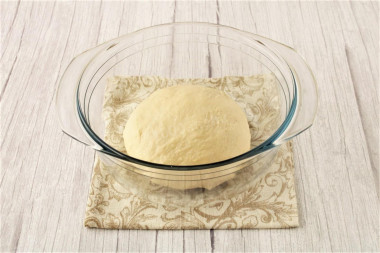
The dough should be homogeneous, soft, pliable, not sticky to the hands. Cover the dough with a towel and leave in a warm place to rise for 70-80 minutes. The rise time will depend on the air temperature and yeast activity.
Step 15:

While the dough is coming, prepare the filling. It can also be done in advance. Boil the eggs hard-boiled for 8-9 minutes. Place the boiled eggs immediately in cold water to cool down. From the sharp temperature contrast, the shell will be easier to clean.
Step 16:
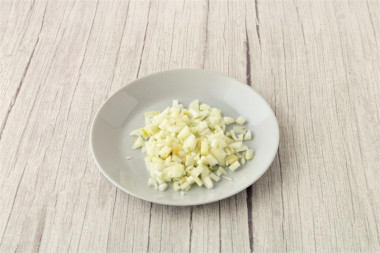
Pre-peeled onion cut into small cubes.
Step 17:
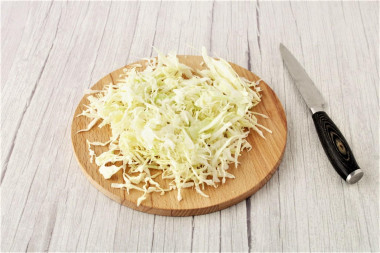
Wash the cabbage, remove the upper leaves. Chop the cabbage into thin strips.
Step 18:
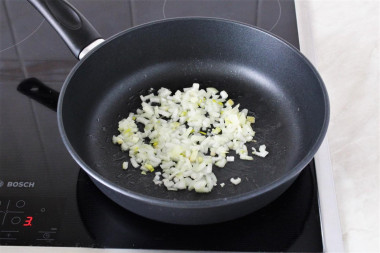
Fry the onion in a frying pan with the addition of vegetable oil, stirring occasionally, for 3-4 minutes.
Step 19:
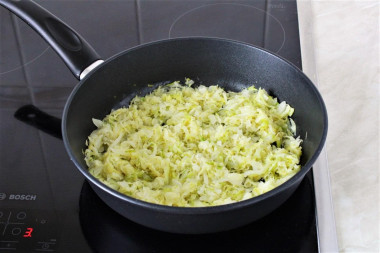
Put the prepared cabbage in a frying pan with the onion, mix. Simmer the cabbage over moderate heat until soft. In the middle of cooking, salt the cabbage, add ground black pepper or any spices to taste. If the cabbage is young, when quenching its volume will decrease significantly.
Step 20:
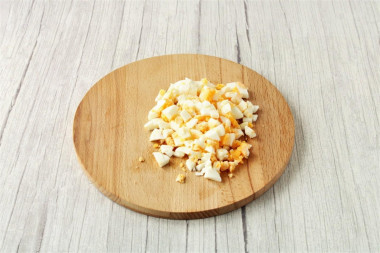
Peel boiled eggs, cut into small cubes.
Step 21:
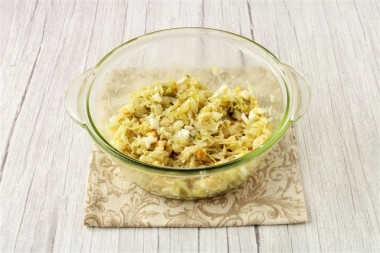
Cool the finished cabbage, combine with boiled eggs, mix.
Step 22:
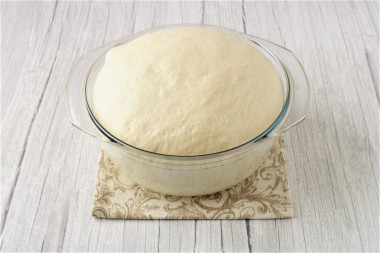
The dough has risen, its volume has grown 2.5 times.
Step 23:
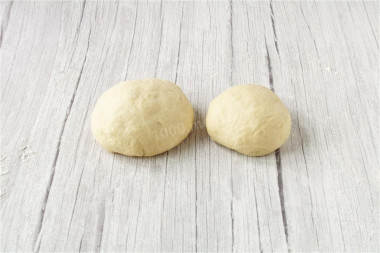
Gently knead the dough, put it on the table, sprinkled with flour. Divide the dough into 2 unequal parts: a larger one for the base of the pie, a smaller one for the top.
Step 24:
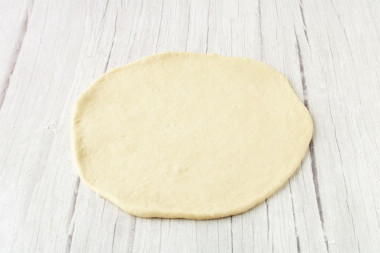
Roll out most of the dough into a round layer. Its size should be larger than the diameter of the mold in which the pie will be baked.
Step 25:
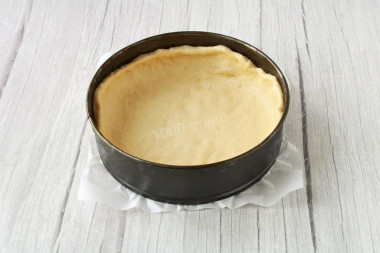
Grease a baking dish with a diameter of 22-24 cm with vegetable oil. I covered the bottom of the form with parchment. Transfer the rolled dough to the mold, distributing it along the bottom and sides.
Step 26:
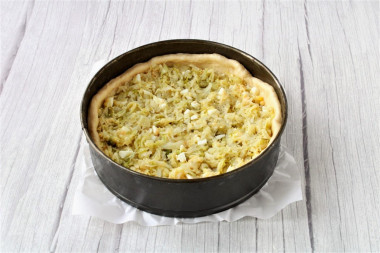
Put the filling on the dough in an even layer.
Step 27:

Lower the edges of the dough onto the filling.
Step 28:

Roll out the smaller part of the dough in the same way. Cut the circles out of the dough with a round notch and put them on top of the filling in the form of a flower. But you can make the top of the pie at your discretion and decorate as desired.
Step 29:
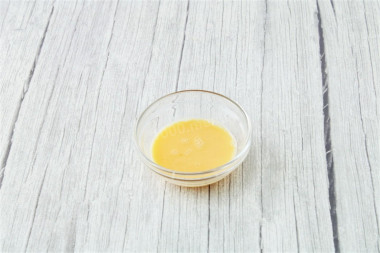
To lubricate the cake, whisk the yolk with milk until smooth.
Step 30:

During the formation of the top of the pie, small holes should remain between the dough circles for steam to escape during baking, or you can make a hole in the middle. Using a cooking brush, brush the yolk mixture on top of the pie.
Step 31:
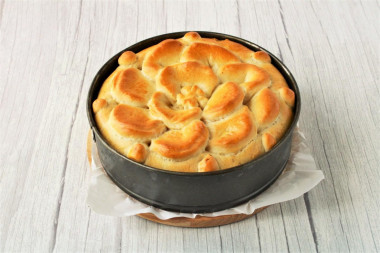
Bake the cabbage pie in a preheated 180 C oven for about 30-35 minutes until golden brown. If the top of the pie has browned prematurely, cover it with foil and continue baking. The cooking time and mode may be different. Be sure to take into account the features of your oven.
Step 32:
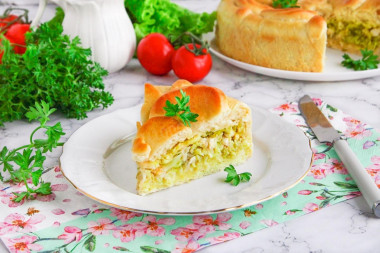
Cool the finished cake a little, cut into portions and serve to the table. Bon appetit!
Important! The size of the mold must match the number of ingredients. If you do not have a shape of a diameter suitable for the recipe or you want to bake a pie of a larger or smaller size, an article about how to make the right calculations and not make a mistake will help, how to choose the shape of the desired diameter .
Important: how to properly replace dry yeast with pressed yeast, in which liquid it is better to breed, why you need to be able to distinguish active yeast from instant and other useful tips read in the article about yeast .
Keep in mind that everyone's ovens are different. The temperature and cooking time may differ from those specified in the recipe. To make any baked dish successful, use useful information about the features of ovens !
Caloric content of the products possible in the composition of the dish
- Whole cow's milk - 68 kcal/100g
- Milk 3.5% fat content - 64 kcal/100g
- Milk 3.2% fat content - 60 kcal/100g
- Milk 1.5% fat content - 47 kcal/100g
- Concentrated milk 7.5% fat content - 140 kcal/100g
- Milk 2.5% fat content - 54 kcal/100g
- Chicken egg - 157 kcal/100g
- Egg white - 45 kcal/100g
- Egg powder - 542 kcal/100g
- Egg yolk - 352 kcal/100g
- Ostrich egg - 118 kcal/100g
- Ground black pepper - 255 kcal/100g
- Granulated sugar - 398 kcal/100g
- Sugar - 398 kcal/100g
- Vegetable oil - 873 kcal/100g
- Salt - 0 kcal/100g
- Onion - 41 kcal/100g
- Wheat flour - 325 kcal/100g
- White cabbage - 28 kcal/100g
- Boiled white cabbage - 21 kcal/100g
- Egg yolks - 352 kcal/100g
- Dry yeast - 410 kcal/100g

